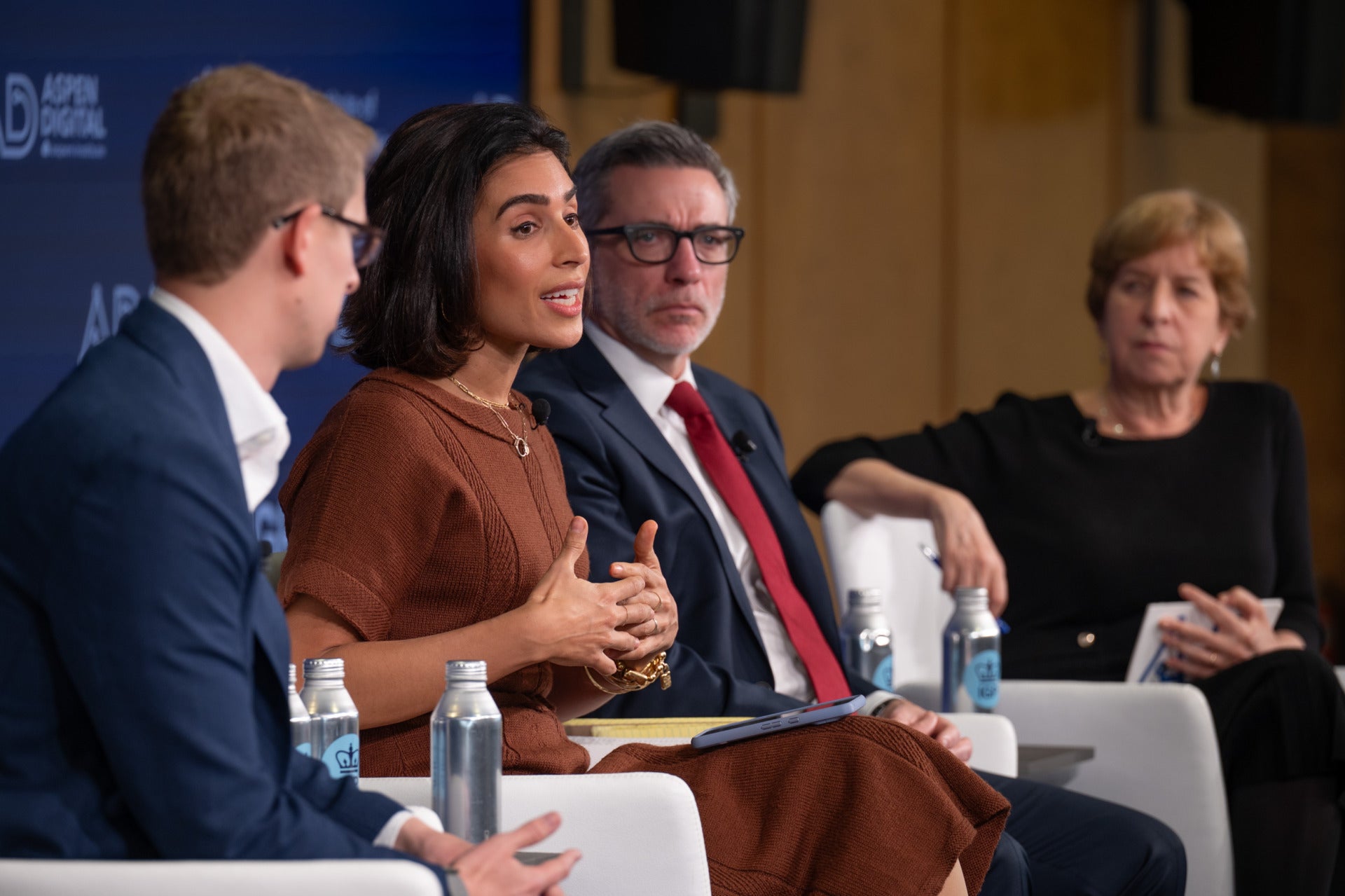When it comes to the Internet, the COVID-19 crisis is teaching us that we’re so much better off than we could have been, but not as good as we need to be.
First, some good news. Had the pandemic occurred ten years earlier, there would be no Zoom for office workers, no remote learning for kids, no Netflix binge-watching at scale. Back then, the average download speed for wired broadband in the US was 4.1 Mbps. Working or taking classes are home at those speeds would have been unthinkable. Yet today, with an average of nearly 140 Mbps, it is suddenly being done by tens of millions.
COVID-19 is a stress test for many systems in the United States, most critically in our health, government, education, media, retail and financial services sectors. All of them are now depending more than ever on the Internet to serve their users. Network demand for some applications has experienced increases as much as 200% in the last month.
The current health crisis will likely peak some time this year, but our intensified reliance on digital technology will not. After the crisis, the challenge for policymakers and industry leaders will be to analyze the results of that stress test and take whatever actions they require, including more efforts to close the digital divide.
We propose an initiative that combines the best of the admirable 9/11 Commission and the 2010 National Broadband Plan (NBP). The first was a response to a crisis, while the latter delivered responses to avoid a crisis. We need both kinds of inquiries.
The NBP encouraged both public and private efforts that contributed to the robust infrastructure on which we’re now relying so heavily. The plan was the catalyst, for example, for Google Fiber, a flawed business but a policy success in driving increased speed and renewed competition. To encourage deployment and adoption, the NBP recommended transitioning Universal Service from subsidizing voice to subsidizing broadband. The NBP was also one of the inspirations for Comcast’s Internet Essentials program, which has, since 2011, connected eight million low-income Americans.
Mobile broadband networks were in their infancy in 2010, but the NBP sounded the alarm of an imminent lack of available radio spectrum, spurring federal efforts to reallocate underutilized frequencies controlled by both government and private licensees. It also laid out a path for a National Public Safety network, a recommendation of the 9/11 Commission, that today is supporting first responders as they work through the COVID-19 crisis.
These achievements all required the cooperation of multiple parties, including Congress, the White House, local governments and, particularly when incentives were understood and aligned, private enterprises. The NBP succeeded principally by setting goals, not mandates, and developing policy frameworks for achieving those goals. The new initiative we propose would do the same.
Whatever the successes of both the 9/11 Commission and the NBP, however, the COVID-19 crisis is shining a light on areas that still need significant improvement. The new initiative should take what we’ve learned, both from the current crisis and otherwise, and use it to address areas where critical gaps remain:
Performance gaps:
So far, our networks have performed admirably, despite the surge in demand. The U.S. has not experienced either the shut-downs or the need to reduce video quality that other countries have. After the stress test, we’ll need to determine more specifically how the network performed, and if any weak links were found. Actual usage data should also inform a fresh look at how we allocate spectrum between licensed, unlicensed and shared regimes going forward. Should the voluntary lending of un-utilized spectrum we’re seeing in the crisis be routinized, or applied in other situations? We’ll also need to examine whether we met the communications needs of first responders, makeshift hospitals, and other emergency settings.
Coverage gaps:
In the last decade, connecting every home to broadband has received the most attention of any of the NBP’s recommendations. Yet, as the current crisis underscores, problems remain both in terms of access (sparsely-populated areas with no high-speed providers) and adoption (households that, for complicated reasons, do not subscribe to broadband even when it is available).
Congress has already told the FCC to collect more accurate data of the current state of broadband. The initiative we propose would use experience from the COVID-19 crisis, as well as other new data sources, to update, recapitalize, and improve universal service programs, examining questions such as the baseline speeds required to receive support, how tosupport learning at home,whether subsidies for computers and other devices should be included, and how to create a sustainable funding base. Whatever the recommendations, the goal should be clear: let’s accelerate even faster finishing the job of connecting all.
Security gaps:
As we move more office work, education, and socializing to the home on a permanent basis, we need to reevaluate network security. Private companies are best-suited to determine their own strategies, but some applications, including telehealth and public education, may require national standards. In addition, as we have learned with unanticipated issues accompanying the sudden explosion in video conferencing and proposed contact tracing applications, there may also be a need for greater transparency. Further, small businesses and others would benefit from detailed best practices, derived from analyzing what we’ve learned in the last decade and through the crisis.
Utilization gaps:
The digital divide that no one talks about, but which may emerge from the current crisis as our biggest opportunity, is between how our communications networks are being used to today and how they could already be used to improve outcomes across industries and in the public sector, particularly for applications identified by the NBP as strategic. As both of us have seen in our own work and as others have reported, we’re finding many industries and government services have not digitized fast enough. Nor have they taken full advantage of the availability of broadband to improve their customer service, capacity, resiliency, adaptability, transparency, and security.
One tragic illustration was the scene in Florida, with hundreds of people risking their safety to line up to obtain an unemployment form because the Florida website crashed, demonstrating how, among other examples one could point to, the public sector is still behind where it should be in terms of providing public services over the internet.
Given the demonstrated capacity and capability of our networks, we are suffering from a utilization diffusion lag, similar to that which accompanied electrification in the 1900s. The crisis is bringing the cost of that lag into painful focus.
Learnings from this unprecedented experience, however, could illuminate a better path forward. As author Nassim Taleb wrote in his book Antifragile, “The excess energy released from overreaction to setbacks is what innovates.” This crisis is likely to unleash that kind of innovation, particularly with telehealth, telecommuting, online education, and public services.
We’ll need more good ideas and ways to normalize and scale them. Evaluating what worked and what didn’t can help close the divide between our current reality and the potential benefits broadband can deliver.
Information gaps:
For better and for worse, the Internet has become the primary source of information for news, government services, work, school, and more. While the network has been essential in mitigating the impact of the crisis, some activities, such as selling fake cures, have been destructive. We need to learn how, in any future crisis, our society can reduce the pollution of misinformation.
Further, we need to understand why the federal government, at least initially, did such a poor job of providing needed, trusted, and relevant information about the pandemic itself. For example, why, within a few weeks of the virus being in the United States, wasn’t there a website in which one could put in one’s zip code and immediately learn the status of the infections in the surrounding area, as well as where to be tested and treated, and where one could be treated for regular medical issues without a high risk of COVID-19 exposure?
Whether as part of this initiative or separately, we’ll need similar evaluations of hospital systems, schools, food distribution supply chains, and other strategic national assets. Medical facilities, clearly, don’t have the same level of adaptability to surges in demand as communications networks. But while addressing a surge in demand for ventilators in different than addressing a surge in data, part of the answer for improved medical responses, will be, as other countries are doing, increased reliance on communications networks for tracking outbreaks and providing personalized information, diagnostics, and telehealth treatments.
For all of these systems, the U.S. will only see improvements if we explore—rationally, soberly, and without allegiance to partisan political narratives—what went right and what went wrong. We need to evaluate how we did with the short-term emergency tasks of ensuring peak capacity remained available, immediately expanding coverage where possible and getting and keeping homes on-line. But we have to reevaluate our longer-term strategy as well.
The Internet has become, in just a decade, the foundation for economic growth and social progress. Today, it’s already clear that we must do even more to bring affordable, abundant access to all. Tomorrow—and there will be a tomorrow—we must assess anew, based on new facts and new realities, how we safeguard life-saving communications technologies, improve key applications in government, health care, education, and other industries, and better realize the true potential of digital services, both to respond in a crisis and to avoid as many of them as we can in the future.
Blair Levin is a nonresident Senior Fellow at the Brookings Institution and was the Executive Director of the 2010 National Broadband Plan. Larry Downes is the author or co-author of several books on the digital economy, including, most recently, “Pivot to the Future: Discovering Value and Creating Growth in a Disrupted World” (Public Affairs 2019). Both authors have regularly participated in the Aspen Institute Conference on Communications Policy.

